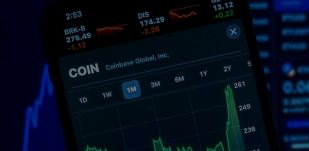What is an NCC?
NCC stands for National Clearing Code - also known as a routing number. It is used for transferring money to accounts that don’t have an International Bank Account Number (IBAN).
Countries that use NCCs
Since most standard bank accounts across Europe have an IBAN, an NCC is usually only required when making overseas payments to certain countries. Some of these include:
- Australia
- Canada
- China
- US
- Hong Kong
- India
- Poland
- Switzerland
- South Africa
- Japan
- New Zealand
- Sweden
- Singapore
- Taiwan
Examples of NCCs
NCCs are assigned according to agreed number ranges. Most banks have their own bank code which is used as the prefix to the full account number. Codes are sometimes shared when banks act as agents for other bank brands, with the branch code typically falling within a given range for that brand.
If you need to provide an NCC it will look something like these:
- Australia:
SWIFT – 57C://AU followed by the six-digit bank code, no spaces
ISO20022 – AUBSB (Australian Bank State Branch Code) followed by the six-digit bank code, no spaces.
- Canada:
SWIFT – 57C://CC followed by the nine-digit bank code, no spaces
ISO20022 – CACPA (Canadian Payments Association Payment Routing Number) followed by the nine-digit bank code, no spaces
- South Africa:
SWIFT – 57C://ZA followed by the six-digit bank code, no spaces
ISO20022 – ZANCC (South African National Clearing Code) followed by the six-digit bank code, no spaces
When do you need to use an NCC?
An NCC is not typically used for payments in the European Union, but will probably be required if you’re making payments to the US, South Africa, Australia, or New Zealand.
If you’re making a payment to the US, you may be asked for a routing number or American Bankers Association (ABA) number instead of an NCC. If you’re making a payment to South Africa, Australia, or New Zealand you may be asked for a Bank State Branch (BSB) code instead of an NCC. If you’re ever asked for a SWIFT code - also known as a BIC code - no matter what country you're sending money to, you won’t need an NCC.
If you make a payment to a country that uses NCCs, you’ll also need to provide the payee’s bank name and address.
Make international payments with Clear Currency
Understanding what you need to provide when making international payments will help to speed up the process. Understanding the role of an NCC will help to ensure your funds land in the right account when you make an international money transfer to certain countries.
Open your free Clear Currency account today for quick, secure, and cost-effective international currency transfers.
Related Articles
How to Mitigate Foreign Exchange Risk
Currency risk can have a significant effect on the efficiency and profitability of any international business. Each exchange rate movement affects how much you receive from sales and what you pay to suppliers.
Read more
Moving to Dubai from the UK: Checklist
You’re ready for a new life overseas and have decided you’re moving to Dubai. Now it’s time to consider the various costs involved, from your visa and accommodation, to health insurance, shipping your belongings and bringing your beloved pets along too.
Read more
Currency Outlook Quarter 1 2023
Clear Currency looks back at the performance of the US dollar, euro and sterling in Q4 2022, and assesses what might be in store for Q1 2023.
Read more


